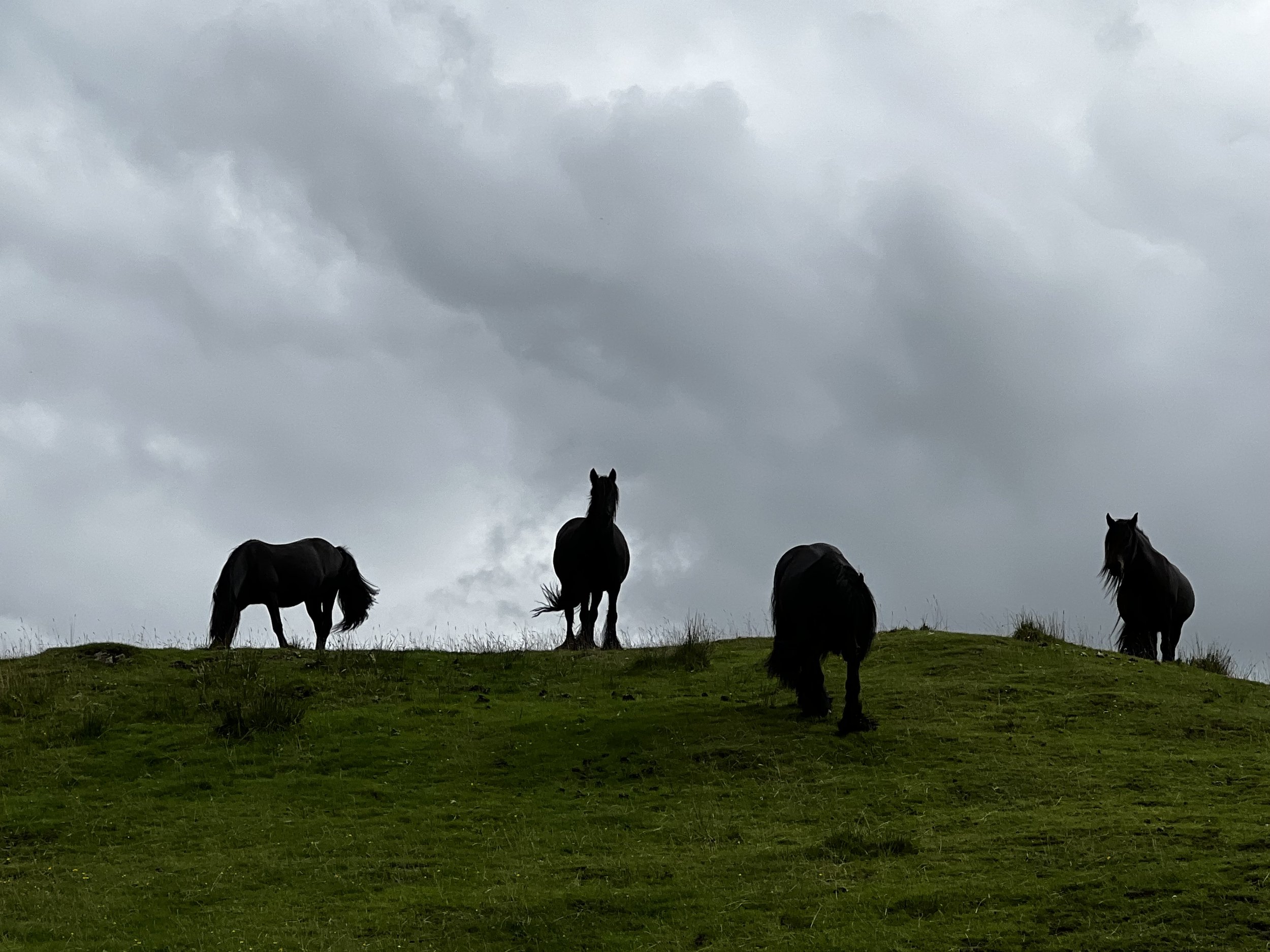
The Heritage of
The Hill Bred Fell Pony
A film by Katarzyna Okrzesik-Mikolajek / Fell Pony Heritage Trust, featuring the Drybarrows Fell Ponies
A brief Fell Pony History
Fell Ponies have thrived on similar terrain to the Pacific Northwest, with flora and sparse forage in common to their native territory of Cumbria in Northern England. "Fell" is a Norse word for "hill.” Fell ponies originate from the now extinct Galloway pony, whose ancestors date to the iron ages. Fell ponies are considered "all around" ponies in terms of equine ability.
They are nimble, compact, well-boned and athletic. They are the essence of a hardy draft with a good work ethic. Historically, they have excelled at driving and worked packing goods long distances. Long, long ago, some were employed as pit ponies in the mines, as their short stature and strength made them appealing for this type of work.
In modern times, Fells are dependable trail riding partners and typically are safe mounts for beginners, as they take care of their rider as they have been bred to embody a docile temperament. They are curious, cross water with ease with wide round hooves, and most enjoy the intellectual and physical engagement of traversing obstacles. Western or English, jumping, trail riding, driving and dressage are in their repertoire. They are frequently employed in therapy programs due their quiet, gentle temperaments and patience.
A Timeline for the Fell Pony
Pre-historic era: Predecessors of the Fell pony roamed the North of England mostly in Cumbria (1).
Iron Age (500 BC): Mostly resembled the Exmoor pony, with a slightly shorter build and were in common use in Britain by this time (1).
Roman Occupation (55 BC - 40s AD): Height increased (1).
Viking Age (793–1066 AD): Ponies were used to pull sledges, plough, ride, pack (1).
11th and 12th centuries: Long distance pack work carrying woolen goods, fresh food, preserves, metal ores and to hunt wolves that would attack flocks of sheep (1).
13th century - 18th century: Ponies were utilized for mass merchandise and imported goods transport in pack trains over long distances (1).
Mid 18th century to the mid 20th century: Some Fell ponies may have worked in coal mines following the death of 26 children. At that time, women and children under 10 years old were no longer permitted to work in the mines and equines took their place. The last surviving pit pony was named, “Tony” and lived to 40, dying in 2011 (3). Trotting races amongst ponies was more popular than thoroughbred racing in the 1880’s and Fells excelled at a good paced trot on level paths of up to a half mile (4).
20th century: In 1922 the The Fell Pony Society was formed in its modern form with the goal of preserving the “old type” of pony (1).
Mid-twentieth century: Driving becomes popular with affluence with the Fell pony (1).
21st century: Fells still present themselves as they have throughout history: for driving, as pack ponies, trotting races (1). And in new roles in the forestry services, conservation grazing (5), riding, endurance and as agile hunter/jumpers (1). Their sure-footedness and good judgement make them a safe mount.
1. The Fell Pony Society. (2018). Early history. Retrieved from http://www.fellponysociety.org/about_breed.htm
2. Edwards, E. H. (1992). Leading the field: British native breeds of horses & ponies. London, Stanley Paul & Co. ltd.
3. Last Northcumberland pit pony passes away (2011, July 21), Evening Chronicle. Retrieved from http://www.chroniclelive.co.uk/news/north-east-news/last-northumberland-pit-pony-passes-1401845
4. The Fell Pony Museum. (2018). Trotting ponies. Retrieved from http://www.fellponymuseum.org.uk/fells/19clate/19thc2.htm
5. Friends of the Lake District. (2018). Meet the Fell ponies. Retrieved from https://www.friendsofthelakedistrict.org.uk/News/meet-the-fell-ponies-helm-2015
Greeholme Peggy, 2023
To learn more:
Visit the Fell Pony Society
Visit the Fell Pony Society of North America
Visit the Fell Pony Museum
Enjoy this short, but lovely film about Fell pony type and conformation created for the Fell Pony Society in the 2022 Centenary year (100 year anniversary).
By Dreamtime Films, Tom Lloyd
Video clip of the Bybeck herd, Cumbria, 2019


